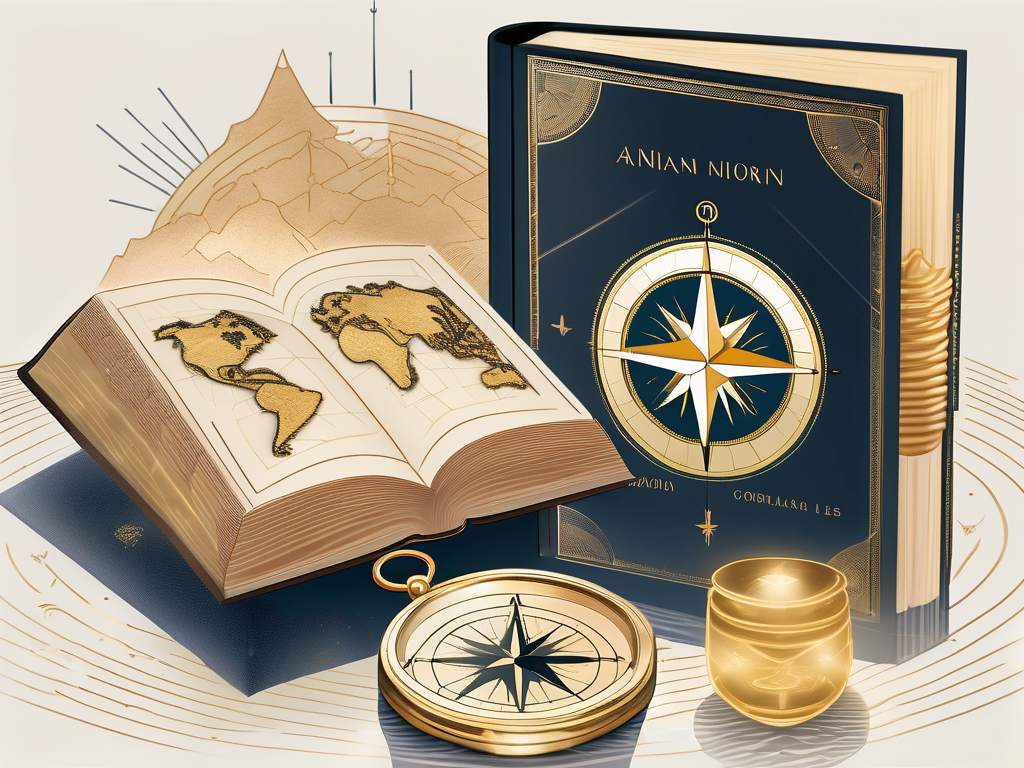The Christian Bible is not just a religious text; it is a book that has shaped the course of human history. Its origins can be traced back to ancient times, and its impact continues to be felt in the modern era. From the Old Testament to the New Testament, from the Apocrypha to contemporary translations, the Bible has undergone a remarkable journey. In this article, we will explore the fascinating history of the Christian Bible and its cultural impact.
Origins of the Christian Bible
The Christian Bible finds its roots in the religious traditions of ancient civilizations. The Old Testament, also known as the Hebrew Bible, is a collection of sacred texts that dates back thousands of years. It contains the religious and historical narratives of the ancient Israelites, with books such as Genesis, Exodus, and Psalms being widely recognized and cherished. These texts provide a glimpse into the beliefs and practices of the ancient Hebrews.
However, the origins of the Christian Bible go beyond the ancient Israelites. The influence of other ancient civilizations, such as the Mesopotamians and Egyptians, can also be seen in the development of religious texts. For example, the story of the Great Flood, which is found in the book of Genesis, bears striking similarities to the Mesopotamian Epic of Gilgamesh. This suggests that the ancient Israelites may have drawn inspiration from the cultural and literary traditions of their neighboring civilizations.
The Old Testament: A Brief Overview
The Old Testament is divided into several sections, including the Torah, the Prophets, and the Writings. It contains stories of creation, the lives of prophets and kings, moral teachings, and the laws that governed ancient Israelite society. These texts not only hold religious significance but also offer valuable insights into the history and culture of that time. They provide a foundation for understanding the subsequent development of the Christian Bible.
Within the Old Testament, the Torah holds a special place. It is considered the most sacred and authoritative part of the Hebrew Bible. The Torah consists of the first five books: Genesis, Exodus, Leviticus, Numbers, and Deuteronomy. These books contain the foundational narratives of the Israelite people, including the story of their ancestors, the patriarchs and matriarchs, and the liberation from slavery in Egypt. The laws and commandments found in the Torah also played a crucial role in shaping the religious and social life of the ancient Israelites.
The New Testament: An Introduction
The New Testament, on the other hand, focuses on the life, teachings, and ministry of Jesus Christ. It includes the four Gospels, which provide accounts of Jesus’ life and teachings as well as his crucifixion and resurrection. The Gospels of Matthew, Mark, Luke, and John offer different perspectives on the life of Jesus, providing a comprehensive understanding of his message and mission.
In addition to the Gospels, the New Testament also contains letters written by early Christian leaders, such as Paul and Peter. These letters, known as the Epistles, were written to various Christian communities and individuals, offering guidance, encouragement, and theological insights. They address issues of faith, morality, and the challenges faced by the early Christian communities.
The Apocrypha: Understanding Its Significance
In addition to the Old and New Testaments, there is another collection of texts known as the Apocrypha. These books, which are not included in the Protestant Bible but are accepted by some Christian traditions, provide further insights into the religious and cultural context of the biblical era. The Apocrypha includes books such as Tobit, Judith, and Wisdom of Solomon, among others.
While their inclusion in the Bible is a subject of debate, the Apocrypha offers valuable historical and literary contributions. These texts shed light on the religious beliefs and practices of the Jewish community during the Second Temple period. They provide a deeper understanding of the diverse range of religious thought and expression that existed during that time.
Furthermore, the Apocrypha contains stories that are not found in the canonical books of the Old Testament. For example, the Book of Tobit tells the story of a righteous man who is guided by an angel on a journey of faith and love. These additional narratives add richness and depth to the biblical tradition, offering alternative perspectives and moral lessons.
In conclusion, the Christian Bible is a complex and multifaceted collection of texts that spans centuries and incorporates diverse cultural influences. From the ancient traditions of the Israelites to the teachings of Jesus Christ and the early Christian communities, the Bible continues to be a source of inspiration, guidance, and scholarly exploration.
The Bible’s Journey Through Time
Over the centuries, the Bible has endured numerous challenges and transformations. In the Middle Ages, the Bible was primarily accessible to the clergy and the educated elite. Handwritten copies, painstakingly produced by scribes, were treasured possessions. These scribes dedicated their lives to meticulously transcribing the sacred texts, ensuring their accuracy and preserving the word of God for future generations. The process of copying the Bible was a laborious task, requiring immense skill and attention to detail. Each stroke of the pen was executed with precision, as any mistake could alter the meaning of the text.
However, with the advent of the printing press in the 15th century, the Bible began to reach a wider audience. This technological innovation revolutionized the spread of knowledge and empowered individuals to read and interpret the Bible for themselves. The printing press allowed for the mass production of Bibles, making them more accessible and affordable. People from all walks of life could now hold the sacred scriptures in their hands and delve into the teachings of Christianity.
The Bible in the Middle Ages
During the Middle Ages, the Bible played a central role in the religious and cultural life of Europe. The Church had a monopoly on the interpretation of scripture, and the Bible was often read and preached in Latin. The laity relied on the clergy to guide them in understanding the teachings of the Bible. The clergy, in turn, used their knowledge of scripture to maintain their authority and control over the masses.
However, this changed with the Protestant Reformation. The Reformation, led by figures like Martin Luther and John Calvin, challenged the authority of the Church and called for a return to the original teachings of the Bible. This movement emphasized the importance of individual interpretation and encouraged the translation of the Bible into vernacular languages, making it accessible to a broader audience. The translation of the Bible into languages such as English, German, and French allowed people to read and understand the scriptures in their own native tongue, empowering them to form their own religious beliefs and challenge the established order.
The Reformation and the Bible
The Protestant Reformation sparked a revolution in religious thought and paved the way for the democratization of biblical knowledge. The Bible became a symbol of resistance and liberation, as individuals sought to break free from the constraints of the Church and interpret scripture for themselves. This newfound freedom led to a proliferation of different interpretations and denominations, each claiming to have the correct understanding of the Bible.
As the Reformation spread across Europe, the Bible became a battleground for theological debates and religious conflicts. Scholars and theologians engaged in fierce debates over the interpretation of scripture, with each side citing different passages to support their arguments. These debates not only shaped religious doctrine but also had profound political and social implications, as rulers aligned themselves with different religious factions to consolidate their power.
The Bible in the Modern Era
In the modern era, the Bible continues to play a significant role in the lives of believers and non-believers alike. With the rise of secularism, questions about the historical accuracy and interpretations of the Bible have become more prevalent. Scholars and theologians engage in critical analysis, seeking to understand the cultural context and intended meaning of the biblical texts. The study of the Bible has evolved into a multidisciplinary field, incorporating archaeology, linguistics, and literary analysis.
Through archaeological discoveries, scholars have gained insights into the historical events and cultural practices described in the Bible. These discoveries have shed light on the ancient world and provided valuable context for understanding the biblical narratives. Linguistic analysis has helped uncover the nuances of the original languages in which the Bible was written, allowing for a deeper understanding of the intended meaning behind the words.
The interpretation of the Bible remains a subject of debate and discussion. Different theological traditions and schools of thought offer diverse perspectives on the meaning and relevance of the scriptures. The Bible continues to inspire and challenge individuals, serving as a source of guidance, comfort, and inspiration.
Translation and Interpretation of the Bible
The translation and interpretation of the Bible have had a profound impact on its understanding and influence. Early translations, such as the Septuagint and the Vulgate, enabled the spread of scripture across different regions and cultures. These translations played a crucial role in the transmission of the Bible’s message to diverse audiences.
When we delve into the history of the translation and interpretation of the Bible, we discover a fascinating journey that spans centuries. It is a journey that encompasses the efforts of countless scholars, linguists, and religious leaders who dedicated their lives to making the Word of God accessible to people of all backgrounds and languages.
Early Translations of the Bible
One noteworthy early translation is the Septuagint, a Greek translation of the Hebrew Bible. This remarkable work of translation emerged in the 3rd century BCE and allowed the spread of Jewish scriptures among Greek-speaking communities. It became an important text not only within Judaism but also in early Christianity. The Septuagint played a significant role in shaping the religious landscape of the time, bridging the gap between different cultures and languages.
Similarly, the Vulgate, translated by Saint Jerome in the 4th century CE, was a Latin version of the Bible widely used by the Catholic Church. Saint Jerome’s translation was a monumental achievement, as it provided a standardized Latin text that exerted a significant influence throughout the Middle Ages. The Vulgate became the authoritative version of the Bible for Western Christianity, shaping the religious practices and beliefs of countless individuals.
The King James Version and Its Impact
The King James Version, published in 1611, remains one of the most influential English translations of the Bible. Commissioned by King James I of England, it sought to bridge the divide between different religious factions and provide a unified text for the English-speaking world. The King James Version’s poetic language and literary style made it not only a religious text but also a work of art. Its impact extended far beyond the realm of religion, significantly influencing English literature and playing a vital role in shaping the English language itself.
Countless writers, poets, and thinkers drew inspiration from the King James Version, incorporating its phrases and imagery into their own works. Its influence can be seen in the works of William Shakespeare, John Milton, and countless others who were captivated by its beauty and power. The King James Version became a cultural touchstone, leaving an indelible mark on the English-speaking world.
Contemporary Translations and Their Influence
Today, we find ourselves in a world where there are numerous contemporary translations of the Bible, each offering a unique perspective on the original texts. Translations such as the New International Version, the English Standard Version, and the New Living Translation cater to different preferences and understandings of the Bible. These translations strive to make the Bible more accessible and relevant to modern readers, ultimately enhancing its cultural impact.
With advancements in scholarship, linguistics, and biblical studies, contemporary translations aim to provide accurate renderings of the original texts while considering the nuances of language and culture. They take into account the latest archaeological discoveries, textual analysis, and historical context to present a faithful representation of the Bible’s message.
Furthermore, contemporary translations often include extensive footnotes, study guides, and supplementary materials to aid readers in their understanding of the text. These resources provide valuable insights into the historical and cultural background of the Bible, allowing readers to engage with the scriptures on a deeper level.
As the world continues to evolve, so too does the translation and interpretation of the Bible. Scholars and translators strive to bridge the gap between ancient texts and modern readers, ensuring that the Word of God remains accessible and relevant to people from all walks of life.
The Bible and Its Cultural Impact
Beyond its religious significance, the Bible has left an indelible mark on various aspects of human culture. Its stories and teachings have pervaded literature, art, law, politics, and social movements throughout history.
The Bible in Literature and Art
Countless works of literature and art have drawn inspiration from biblical narratives. From Shakespeare to Milton, from Michelangelo to Rembrandt, artists and writers have looked to the Bible for themes, imagery, and moral guidance. The Bible’s stories of love, betrayal, redemption, and hope resonate with universal human experiences, making them a rich source of artistic expression.
The Bible’s Influence on Law and Politics
The Bible has often been invoked as a moral and legal authority, shaping the development of laws and political systems. In many countries, legal principles and ethical values have been derived from biblical teachings. The Ten Commandments, for example, have influenced the legal codes of numerous societies, serving as a foundation for concepts of justice and morality.
The Bible’s Role in Social Movements
The Bible has been an integral part of various social and political movements throughout history. It has served as a source of inspiration and a rallying cry for change. From the abolitionist movement to the civil rights movement, activists have used biblical references and teachings to advocate for justice, equality, and compassion.
In conclusion, the history of the Christian Bible is a tale of ancient origins, transformative translations, and enduring cultural impact. From its roots in ancient religious traditions to its role in shaping literature, art, law, politics, and social movements, the Bible continues to captivate and inspire humanity. Regardless of one’s beliefs, the Christian Bible stands as a testament to the power of storytelling, the pursuit of knowledge, and the enduring quest for meaning.












